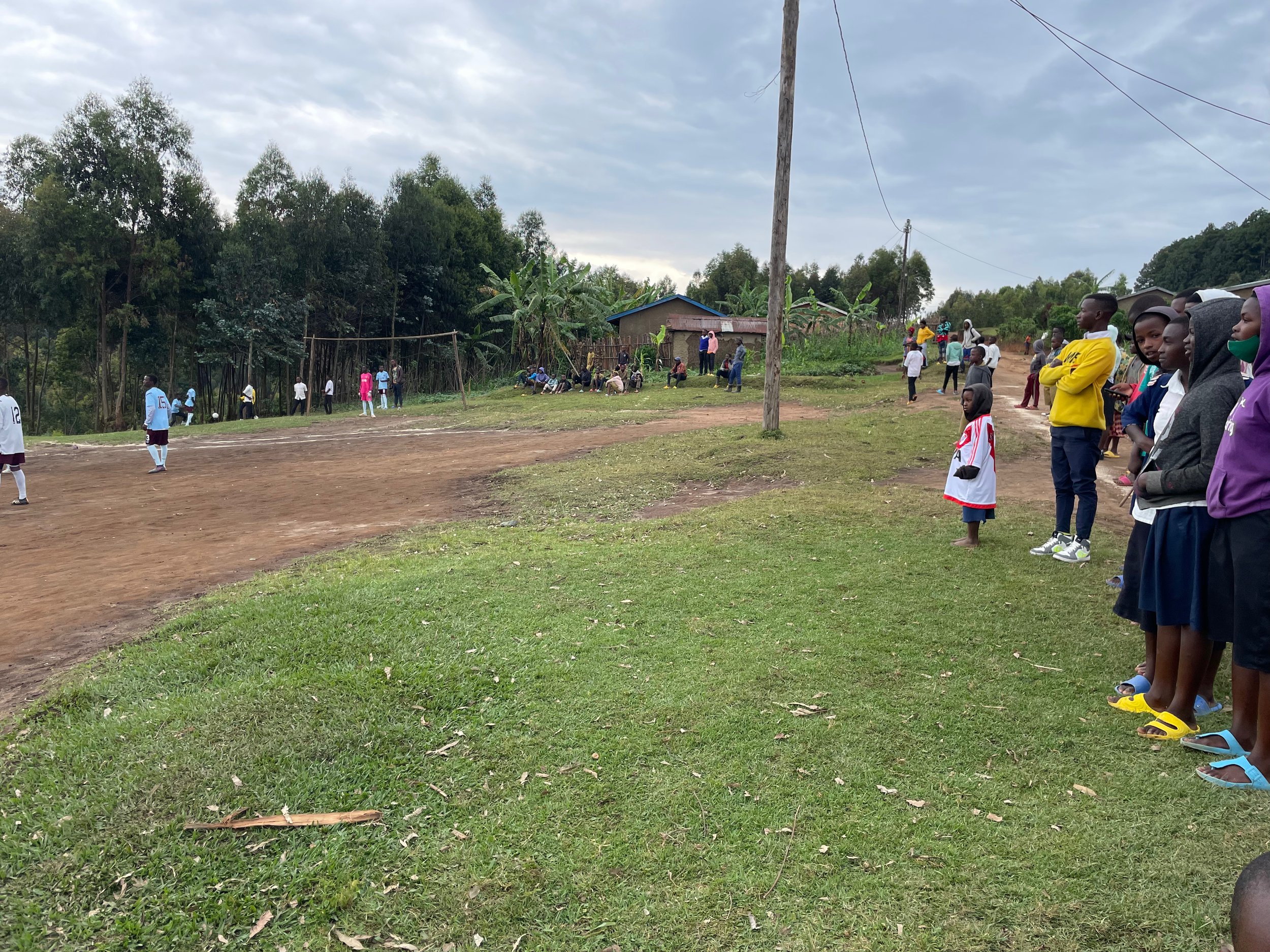Fixing the worst football pitch in the World…
We’re on a mission…to fix up the worst football pitch any of us have coached on (and after several trips to Rwanda, that’s saying something!)
Think slopes, lots of them. Different directions, different gradients. Think big mounds of grass plonked across an uneven clay surface. A telegraph pole several yards onto the pitch, and a big concrete block poking out of the ground somewhere in the middle. A byline with a 40 yard drop down one side and long, skinny trees making up the posts and crossbar.
Then imagine kids of all ages and abilities, playing on this pitch with unlimited enthusiasm, energy and joy. They do already - a typical Rwandan response towards their poverty and hardship.
We’ve been there several times now, and the area really does hold a special place in our hearts. Scotland has already left a small legacy of 20 or so little houses in the village, funded by a Bishopbriggs church group several years ago. There are also many donated Hearts FC tops worn by kids in the area, too many for my liking (as a Dundee Utd fan) to be honest! Now we’d like to do even more and gift them a decent football pitch for the whole community to enjoy.
The total cost of clearing and levelling off the existing pitch, supporting the new pitch on the side of the hill and creating a decent, flat playing surface is budgeted at £17,500.
Our October 2022 group of volunteer coaches raised £6,000 towards the project - we’re going back in February 2024 and need raised the additional £11,500 to finish the job for them
If you or your club can help at all, please donate through our main fundraising page via the button below…
Background
If anywhere deserves a bit of help like this, it’s Bisesero. The area has its own poignant Genocide story, terrible even by Rwanda standards and important in terms of the level of responsibility that the UN, US and in particular France had regarding aspects of the Genocide. When our charity’s Chairman Mark Fleming first visited 15 years ago, white people (Muzungo) were still treated with distrust, something that has taken regular and repeated visits to overcome.
To summarise, Bisesero was one of few areas in Rwanda to present any level of resistance to the army and Interahamwe (militia groups) in 1994 - albeit only with sticks and rocks, but enough to attract thousands of Tutsis seeking refuge. This drew people to the surrounding hills, but the women and children especially proved easy pickings for the genocidaires (killers). The massacre was halted when French Peace-keeping troops arrived - pleading Tutsis begged them to stay and protect them, to ensure that the killings would stop. But with no warning, the French left the area for three days even while the killers were in sight; coming back only after almost all of the remaining Tutsis succumbed to the ferocity and relentlessness of their attackers and were killed.
Estimates vary from 40,000 to 60,000 dead, but what is known is that only 1,000 survived.
A French report, which was commissioned by President Macron and released in March 2021, included a damning indictment of Paris’s role in the bloodshed.
In findings accepted by the French government, the historians accused Paris, which had close ties to the ethnic Hutu regime behind the massacres, of being "blind" to preparations for the genocide and said it bore "serious and overwhelming" responsibility.
The commission found no proof, however, of actual French complicity in the bloodshed. Macron admitted France’s responsibility when he visited Rwanda in May 2021.




